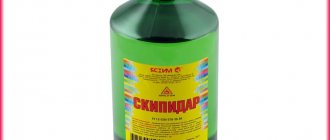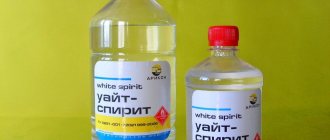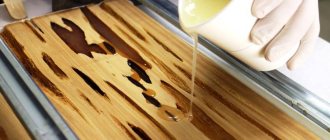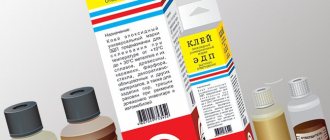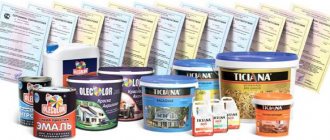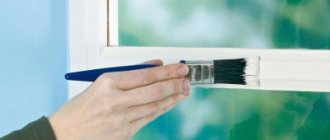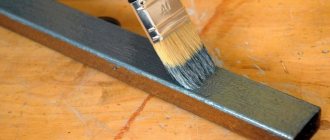How are oil paints made?
When obtaining thickly grated oil paints, first prepare a homogeneous pigment paste in a mixer, and then grind it on paint grinders. Ready-to-use oil paints are obtained by mixing all components in ball mills or diluting thickly ground paints with drying oil.
Interesting materials:
What are non-ferrous alloys? What is Tourmanium ceramics? What is UAI? What is training in the army? What are udk and bbk? What is reflection angle? What is a smart speaker with Alice? What is a unique application identifier? What is the equation of a parabola? What is a refrigerant leak?
Oil paints 8 colors Sonnet - review
I have never worked with oil - this is my first experience.
I took 8 colors to try. Judging by the prices on the Internet for this product, Sonet paints are budget-friendly. I painted on canvas with an outline. I'm about the same artist as a ballerina, so don't judge too harshly.
So, on to the colors. Pros, based on the fact that previously I only worked with gouache and watercolor:
- easy to mix
- lie convexly
- the finished picture looks impressive
Advice. If you are testing paint and do not want to buy additional accessories, such as a palette knife, you can replace it with a toothpick. I replaced the palette with a piece of plastic.
Minuses:
- You just need a ton of white paint, so you need to stock up on it for future use.
- it is very difficult to cover up the color, you need to wait until the paint dries or wash off what you painted
- takes a long time to dry
- glitters under artificial light, so it’s more convenient to draw during the day
- It doesn’t wash out well from the brush; if you don’t wash it, you’ll have to throw the brush away.
Tip: take brushes with artificial bristles.
How long does Sonnet paint take to dry, you ask. The thicker the layer, the longer it takes to dry. In my case, the layer was just enough to cover the roughness of the natural canvas. She dries out for 4 days, but by 5 she can no longer be picked up when touched.
Advice. If you paint in pastel colors or want to make several undertones, start with the lightest - the brush becomes saturated with paint, it cannot be completely cleaned even with solvent, so the transition from dark to light will be difficult.
For those who doubt the purchase, I advise you to try painting with these paints. 8 colors is enough + you need to immediately buy a tube of white paint.
How to store a painting if you are not ready to hang it right away
Store the painting vertically. When you put it down, something (or someone) may fall, flop or sit on your painting. Cover the painting with a cloth or place it in a cardboard box to protect it from dust. Do not rest the front or back surface of the stretched canvas against a sharp object. If you must lean the painting against something, use a stretcher to support it so that nothing is pressing on the canvas.
If you are storing paintings for a long period, we advise you to periodically review them, remove dust and change the covering fabric.
Stored paintings should be covered with cotton sheets, but not with polyethylene, which can cause mold.
Correct application guarantees quick drying
When carrying out repair work, it is important to remember the factors that affect the drying time of paint compositions. If you apply the foundation correctly, it will dry quickly. Basic Rules:
- It is better to paint a wall or other surface in several stages - 2-3 thin layers will dry much faster than 1 thick one,
- oil solutions are applied with a roller or brush, but it is better to go with the first option, since in this case the substance will be more evenly distributed throughout the material,
- External work should be carried out in warm, dry weather,
- the use of a special spray gun reduces drying time,
- It is advisable to pre-heat the wall, and the tone will dry in a matter of hours.
How to quickly dry an oil painting?
Ekaterina Vladimirovna 9 2 years ago Student-painter
If you are just starting to work, then it’s time to think about materials.
First, you will need thinner.
The fastest drying option is pure pinene. If you do not apply the paint in a thick layer, then the entire work will dry overnight, even faster.
You can also try to make a tee yourself, in which the proportion of turpentine will prevail (you can replace it with pinene or white spirit).
Secondly, you will need canvas primer.
Somehow I didn’t have any cardboard for a sketch of the model’s head, so the teacher took some old one that was covered with writing and primed it for me with acrylic primer.
When I started painting, the effect was almost like gouache: the paint dried extremely quickly.
So acrylic primer is your friend in this matter.
If this is a sketch and you don’t really care what to write on, then you can take primed cardboard from any art store. The paint on it also dries quite quickly.
But I would like to immediately make a reservation that this is a very emergency option, which is better not to use if you are a beginner (especially with soil), and it affects the quality of the final work and its safety in the long term. Well, when it dries, the work will be completely matte, and there is a chance of losing some of the brightness of the colors. But this can be solved if you cover the work with a thin layer of dammar varnish (which also dries very quickly).
Properties and features of modern paints
The modern market can offer many color options, but there are actually not so many types of paints, or rather their groups.
Quick-drying, water-based
These water-soluble dispersion paints dry in a matter of hours. They are readily used for both external and internal work; they are used to paint both concrete and brick with plaster. Such materials also have an advantage over other types of paints - environmental friendliness, because... they do not contain an organic solvent.
After drying, water-emulsion and water-dispersed mixtures do not form a dense vapor-proof film, which means that the walls and ceilings will “breathe.”
“Breathing” quick-drying coatings include not only water-based paint, but also latex, wallpaper and modern acrylic paint and enamel, the use of which produces quick and high-quality results.
Alkyd compositions
They are divided into phenolic, urethane, glypthal and pentaphthalic. The composition includes 5 main components:
- solvent solvent (turpentine or white spirit);
- filler (chalk or microtalc);
- functional additives - driers;
- red lead or ocher pigments, titanium white, etc.;
- varnish
Such paints are convenient and easy to apply to the surface; they are also suitable for any type of finishing, decorative and artistic work. The drying time of paint or varnish of this group is significantly reduced, however, such compositions still dry longer than acrylic water-dispersed emulsions.
If the composition contains specific-smelling solvents, it is still not recommended to use alkyd enamels indoors.
Oil paints
Repair and construction oil paints have the same composition of inorganic pigments, combined, alkyd drying oils and fillers as artistic oil paints that we see on the artist’s canvas (picture). You must not touch fresh canvases! Why? Because paints recently applied to canvas, and even in several layers, are easily deformed. The layers of paint need to dry thoroughly before the painting can be presented to the audience and critical judgement.
How long does oil paint take to dry? A very long time! She is generally a candidate for the title of champion in the “Paint Won’t Dry” category. And this is on the artist’s easel! What to do if the walls or floors of the house are covered with an oil-drying oil mixture? Luckily, there are options to speed up the drying of the sticky thick layer. Let's look at them below.
On video: how to choose paint.
How to maintain and clean an oil painting
Remove dust and dirt regularly
Dust, grease, soot, and traces of flies will gradually contaminate the painting if you do not constantly care for it. Cigarette smoke and automobile fumes increase pollution and lead to the need for restoration.
The best cleaning option would be to gently wipe with a velvet or flannel napkin or pad on the front side and also on the back. If the painting has textured convex strokes, then you can use a wide brush with soft bristles. Brush away the dust using smooth movements, moving from the top of the painting to the bottom.
When removing dust from a painting, do not bend or press the canvas under any circumstances—do not rub or clean the painting with force.
Remember the wonderful movie "Mr. Bean" with Rowan Atkinson? In it, the main character sneezed on the famous work of the American artist James Whistler. After which he began to wipe everything with a handkerchief, and then with floor cleaning chemicals. The result was a white spot that had to be restored. But it didn’t turn out as good as the original????
To prevent this from happening, do not use water, cleaning products or alcohol. Moisture is contraindicated for painting! Water should not be used to clean the painting, even on the back side.
What not to do so as not to spoil the picture
Avoid direct sunlight
Direct sunlight causes some pigments to fade. The best light is diffused. You can also use special lighting with lamps that do not heat up and do not distort colors.
Do not touch the painting with your hands
If you constantly touch the picture with your finger, the colors in those places may fade over the years.
Avoid sudden changes in temperature and humidity
Do not hang the picture where there is no constant temperature and humidity conditions. The picture should not be hung where it is exposed to the heat of conventional incandescent lamps. Also, it should not be hung in the kitchen next to the stove and placed in close proximity to heating appliances and under the air conditioner. Otherwise, microcracks will begin to appear on the canvas.
Leaving home in winter and turning off the heating completely, you gradually spoil the painting. Destructions may not be quick, but they will occur with constant exposure.
How to speed up the drying process of paint?
Option 1
A special catalyst will help speed up the drying of oil paint. This product is called a desiccant. It is sold in the paint and varnish departments of construction stores. The drier is an accelerating element for polymerization, that is, its purpose is to ensure that the drying process does not take too long.
Salts of cobalt, manganese and calcium can be used as catalysts-accelerators-driers. Lead, zirconium and barium salts are often used. Salts of carboxylic acids are an ideal solution, although the modern market increasingly offers multi-metal mixed dryers that can be used for several types of paintwork materials and do not in any way affect their color and adhesive properties if you follow the included instructions.
The appendix will tell you how much drier you need to add per 1 liter so that the paint does not “curl” when applied, but simply dries faster. After using such an accelerator, difficult-to-dry oil compositions obediently polymerize. How long does it take for paint with drier to dry? Typically within 24-28 hours at room temperature.
You need to take care of the acceleration before applying the first layer, that is, you need to add the drier directly to the paint before painting, otherwise the trick will not work.
Option 2
How to quickly dry oil paint if the catalyst application time has been missed and 2-3 layers of paint are already on the wall? I would like to believe that the layers are thin enough. If you prefer a spray gun to a roller or brush, which under pressure produces an even, thin, smooth layer, and the paint is distributed over a heated surface, then the drying time is significantly reduced.
A cold wall for oil paint is a bad option. In the cold, the butter hardens, spreads poorly (think of a sandwich) and, accordingly, dries with difficulty.
Option 3
What else can you do to make the paint dry faster? Raise the temperature! High temperature is another catalyst to make the paint harden faster. At industrial facilities they use a heat gun, but for us a hair dryer or a regular infrared heater is enough. With this we will “kill two birds with one stone”: we will raise the temperature inside the room and lower the humidity.
Lack of moisture and heated air contribute to the rapid release of solvent from paint layers (oil paints do not have their own water), so the film formed during drying becomes dense and hard - it has dried out!
Option 4
When the solvent evaporates, many odorous harmful substances are released, so many people advise creating a draft in the room. Ventilation will not only remove unhealthy fumes, but will also promote quick drying. Therefore, we open the doors and windows, turn on the fan, and place the heater in the middle of the room, in no case close to the wall.
The infrared waves of the heater must penetrate through the resulting film and oil base evenly, and also evenly heat the wall underneath. However, make sure that the temperature does not rise above 60 degrees, otherwise the “boiled” paint will simply burst and crack. This is definitely not our option!
Advice! When the paint has dried, wipe the fresh surface with a soft cloth soaked in a solution of vinegar or ammonia, then it will not “stick” and will acquire a pleasant shine.
On any composition (on the packaging) you can read that it must be thoroughly mixed before use - if you neglect this instruction, the binding components may remain at the bottom, making the coating incomplete.
It is also very important that the surface to be treated is dry and free of oil and grease stains, which can directly affect the drying time of the paint. Another reason for prolonged drying may be a violation of storage conditions - all paints have a critical negative temperature. Perhaps the composition you purchased simply froze, losing its properties.
Caring for Oil Paintings: 5 Top Tips
How to properly maintain and protect oil paintings from damage for 5, 10, 100 years? Let us answer the question of how often to service works of art. Can it be hung in the sun? What and how to wash. What to do after a few years and in case of ruptures or sagging.
- Content
- How to store a fresh oil painting
- What not to do so as not to spoil the picture
- How to store a painting if you are not ready to hang it right away
- How oil paintings are stored in museums
- How to maintain and clean an oil painting
- A few more details
Oil painting is one of the most durable painting techniques. If you follow a few simple rules, the painting will not change its appearance even after hundreds of years.
